History of Pearl Street
A long-time resident of Boulder once said that Pearl Street, in the 1940s, was “a good place to buy a pair of socks.” Whatever one’s objective, the town’s main thoroughfare has been many things to many people during its decades-long evolution from mud to mall.
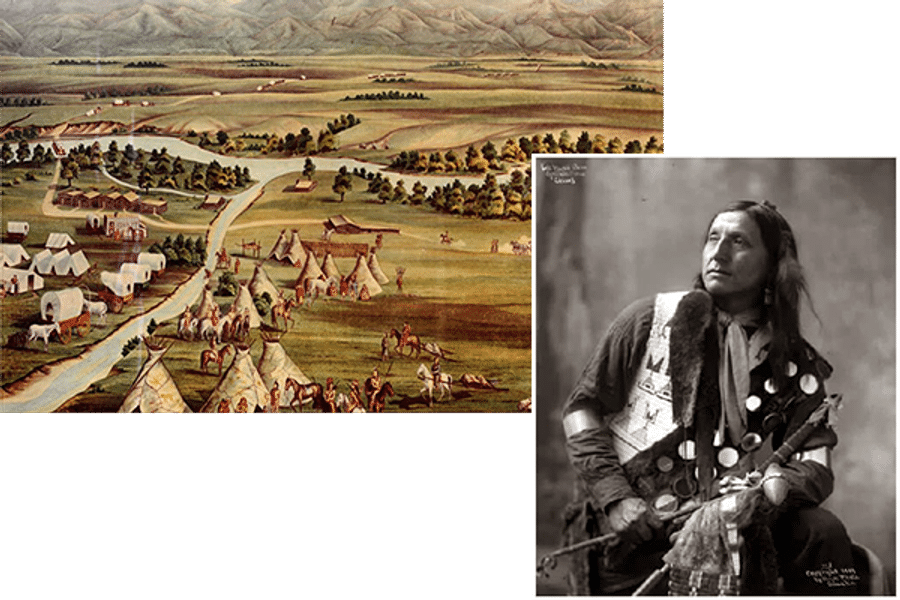
Boulder began as a supply town for gold miners in the mountains, and Pearl Street is believed to have been named for the wife of one of the town’s 54 founders. When these men established the Boulder City Town Company on February 10, 1859, the land was part of the hunting grounds for roaming bands of Arapahos.
In a much paraphrased account twenty-two years later, Chief Niwot, also known as Chief Left Hand, supposedly proclaimed that the Boulder valley was so beautiful that people seeing it will want to stay, and their staying will be the undoing of its beauty. This became known as “Niwot’s curse” or, in modern terminology, an early attempt at growth control.
The gold-seekers stayed anyway, and they drove a stake into the middle of the present-day intersection of Broadway and Pearl. Surveyors sighted across the stake to Valmont Butte, to the east, to determine a straight line for Pearl Street.
In the early days, whenever it rained or snowed and horse-drawn freight wagons and carriages shuttled provisions and people around town, the street was thick with ruts. In the summertime, it billowed with dust and flies. To encourage shoppers to come into their stores, individual business owners built their own wooden sidewalks – but they didn’t always match the height or the width of those of their neighbors. In the 1880s, the boardwalks were removed and replaced with flagstones.
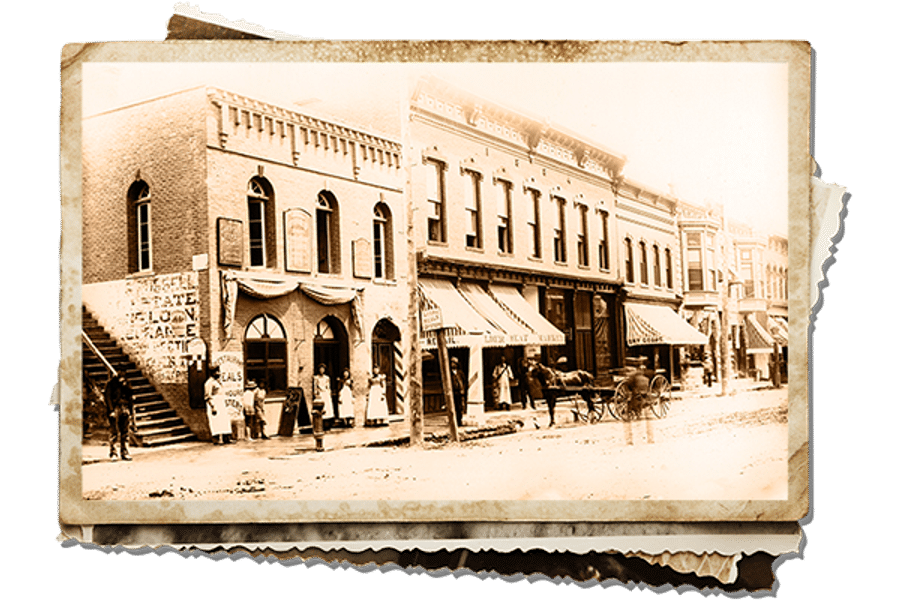
The gold-seekers stayed anyway, and they drove a stake into the middle of the present-day intersection of Broadway and Pearl. Surveyors sighted across the stake to Valmont Butte, to the east, to determine a straight line for Pearl Street.
In the early days, whenever it rained or snowed and horse-drawn freight wagons and carriages shuttled provisions and people around town, the street was thick with ruts. In the summertime, it billowed with dust and flies. To encourage shoppers to come into their stores, individual business owners built their own wooden sidewalks – but they didn’t always match the height or the width of those of their neighbors. In the 1880s, the boardwalks were removed and replaced with flagstones.
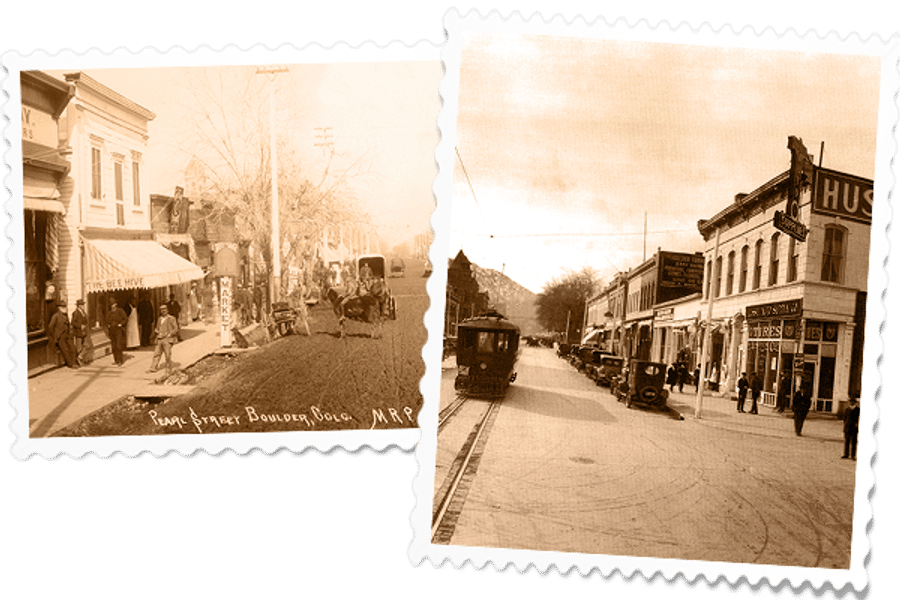
A horse-drawn streetcar seemed like a good idea when it was introduced in 1891. Laborers plowed and scraped Pearl Street and laid tracks. After a horse pulled the wooden streetcar in one direction, it was unhitched and moved to the other end for the return ride. When the novelty of the paying customers wore off, the streetcar went out of business. A decade later, and with a little more sophistication, Boulder residents welcomed the new electric streetcars that wound their way through town. At the time, crushed rock created a smoother and cleaner road surface.
Large streetcars of the Interurban Railroad transported passengers along Pearl Street from 12th Street (now Broadway) to 31st Street, beginning in 1908. Pedestrians could jump on and off while doing their business downtown, or ride all the way to Denver.
By 1917, the automobile era was firmly entrenched, and Pearl, between 11th and 17th streets, became the first street in Boulder to be paved. Uniform 15-foot-wide concrete sidewalks flanked either side.
Storefronts were lowered in the 1930s, in an attempt at modernization. During the next few years, Boulder’s main street remained relatively unchanged, except for the city’s first streetlight – at Pearl and Broadway. By the 1950s and 1960s, architectural preferences changed, and business owners covered many of the historic buildings with metal facades. Streetcars were long-gone, and shopping centers on the outskirts of town became more convenient for busy post-World War II housewives.
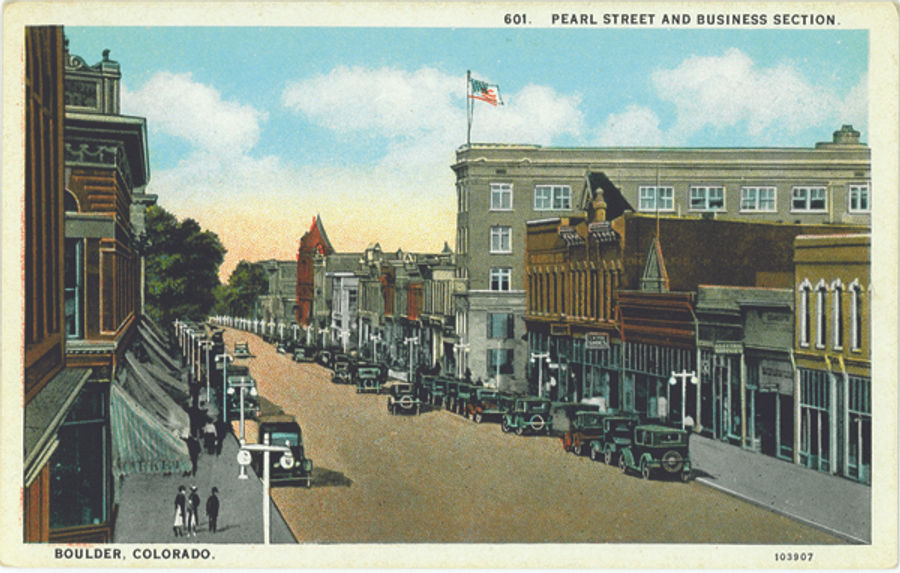
By 1917, the automobile era was firmly entrenched, and Pearl, between 11th and 17th streets, became the first street in Boulder to be paved. Uniform 15-foot-wide concrete sidewalks flanked either side.
Storefronts were lowered in the 1930s, in an attempt at modernization. During the next few years, Boulder’s main street remained relatively unchanged, except for the city’s first streetlight – at Pearl and Broadway. By the 1950s and 1960s, architectural preferences changed, and business owners covered many of the historic buildings with metal facades. Streetcars were long-gone, and shopping centers on the outskirts of town became more convenient for busy post-World War II housewives.
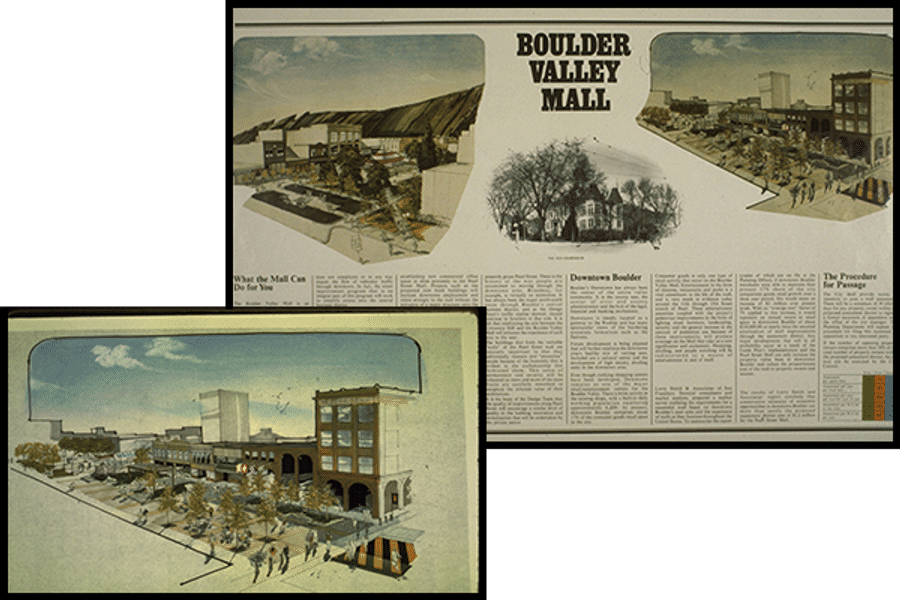
The 1960s and much of the 1970s was a time of transition, as social and political upheaval rocked the country. In Boulder, an increase in crime coincided with a doubling of the population and the deterioration of downtown. To keep the commercial core viable, farsighted citizens began a series of planning groups. The first, in 1966, was the “Committee for the Exploration of the Core Area Potential” (CECAP), later renamed “Boulder Tomorrow, Inc.”
In 1970, Governor John A. Love signed the “Public Mall Act,” officially paving the way for Boulder and other Colorado cities to close streets for the construction of pedestrian malls. That same year, the city of Boulder established the Central Area General Improvement District (CAGID) to provide parking and improvements for a thirty-five-block downtown area.
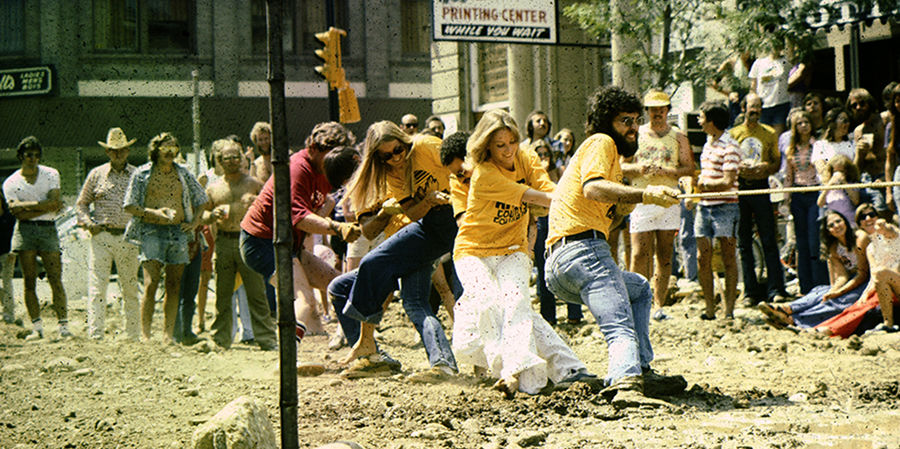
In 1970, Governor John A. Love signed the “Public Mall Act,” officially paving the way for Boulder and other Colorado cities to close streets for the construction of pedestrian malls. That same year, the city of Boulder established the Central Area General Improvement District (CAGID) to provide parking and improvements for a thirty-five-block downtown area.
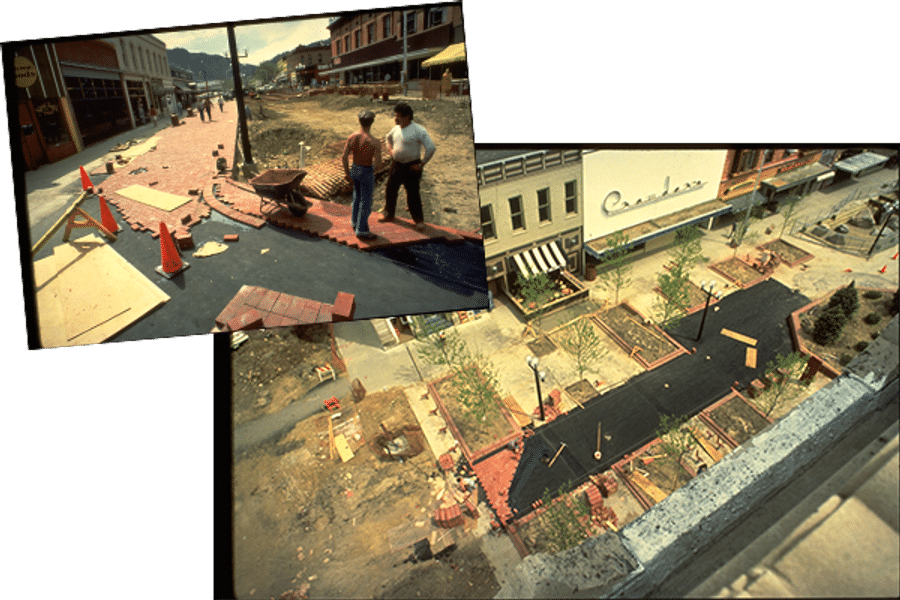
In 1974, Boulder Mayor Penfield Tate appointed a “Core Area Revitalization Committee” (CARC). Despite controversies relating to a projected lack of parking and disruption of businesses, the Boulder City Council passed a resolution to establish the “Downtown Boulder Mall.” The section of Pearl Street between 11th and 15th streets was closed to traffic in June 1976. Residents got used to driving a one-way loop around downtown and walking to the still-open businesses.
Dedication day for the Pearl Street Mall took place on August 6, 1977, changing the face of Pearl Street once again. Since then, long-standing buildings have been restored, and national and local historic designations ensure that the historic character of downtown Boulder will be maintained. Richard Foy, Co-Chair of Communications Arts, Inc. summed up the mall’s success by stating: “Pearl Street, once Boulder’s commercial artery, has become its cultural heart and soul.”
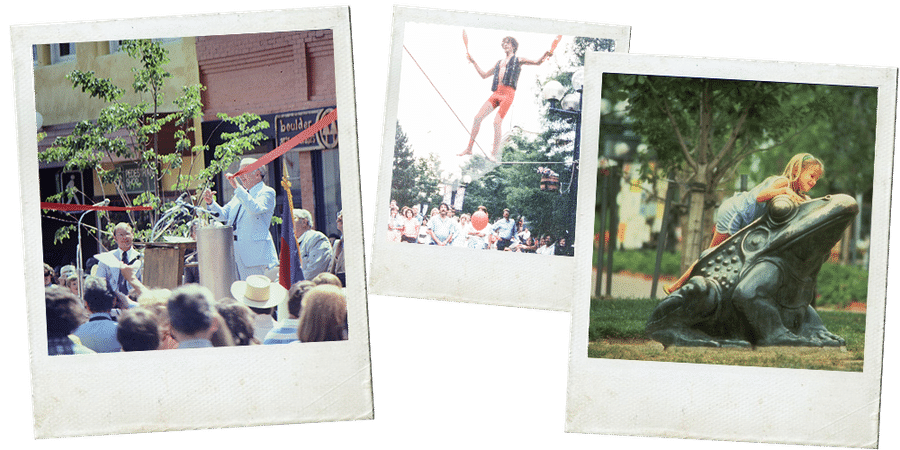
Dedication day for the Pearl Street Mall took place on August 6, 1977, changing the face of Pearl Street once again. Since then, long-standing buildings have been restored, and national and local historic designations ensure that the historic character of downtown Boulder will be maintained. Richard Foy, Co-Chair of Communications Arts, Inc. summed up the mall’s success by stating: “Pearl Street, once Boulder’s commercial artery, has become its cultural heart and soul.”
History of Pearl Street text written and compiled by Silvia Pettem.